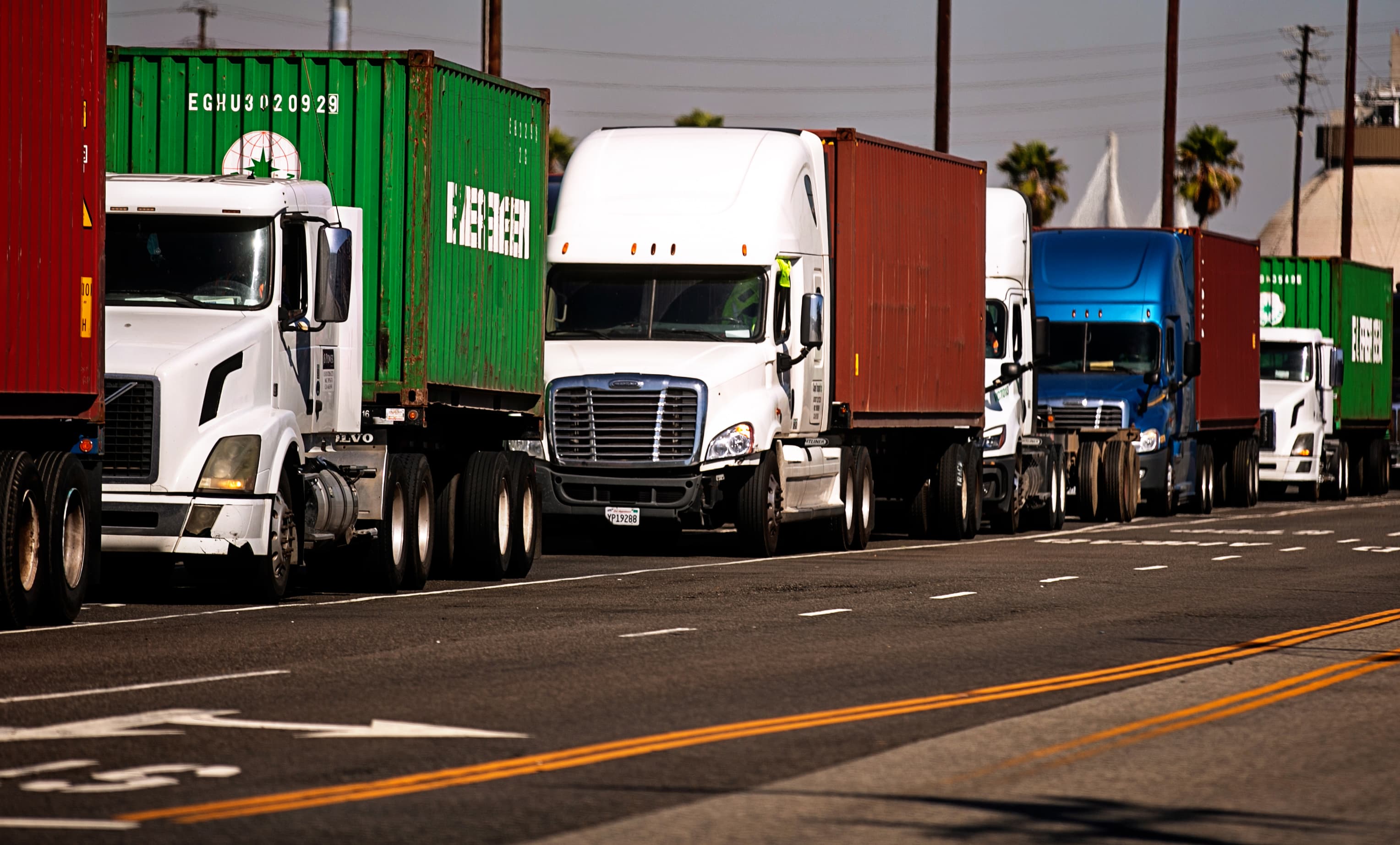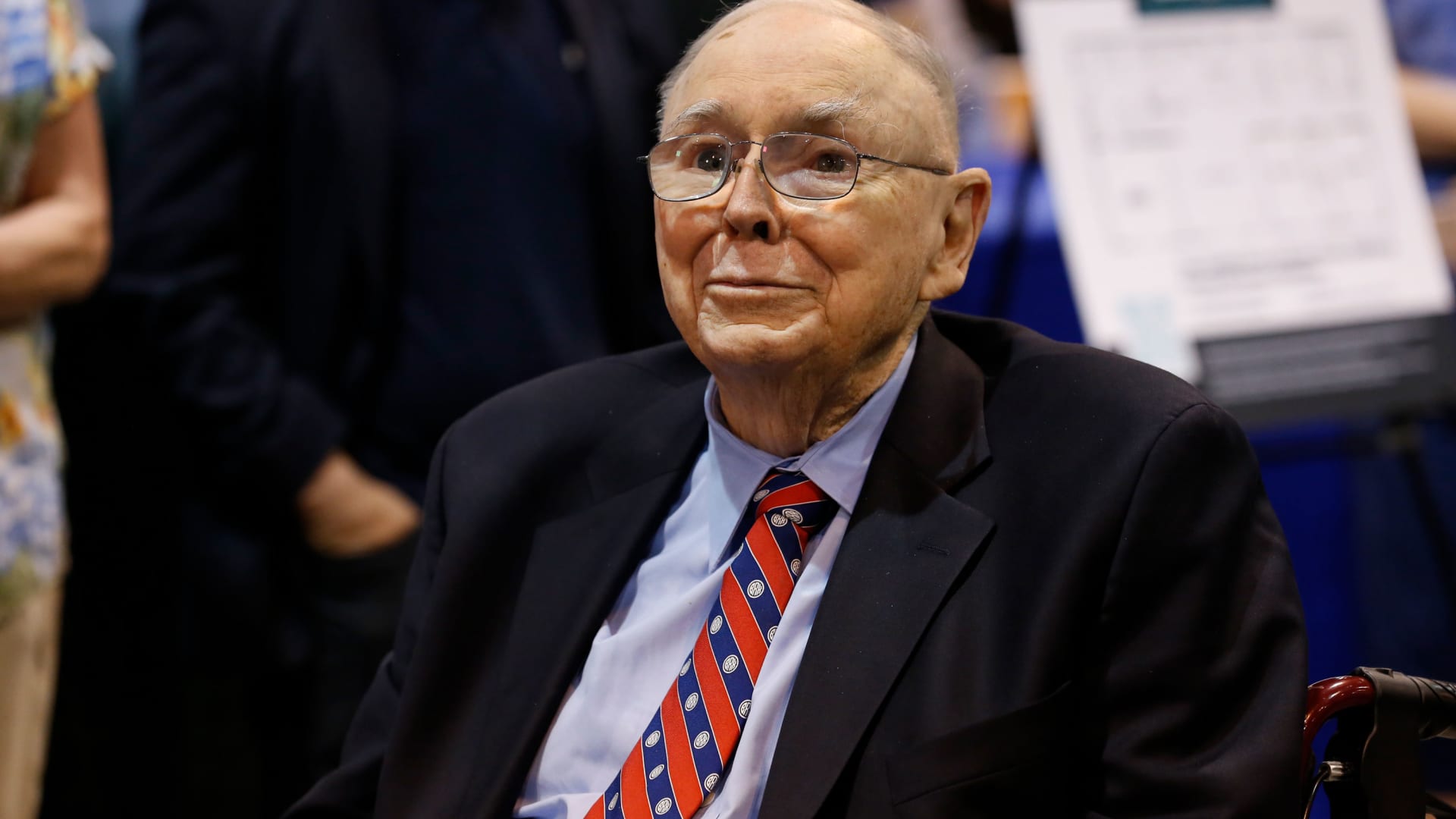
As far as the eye can see cargo trucks wait in long lines to enter The Port of Los Angeles as the port is set to begin operating around the clock on Wednesday, Oct. 13, 2021 in San Pedro, CA.
Jason Armond | Los Angeles Times | Getty Images
As the pandemic recedes, it has created lingering ill effects like worker shortages, inflation and supply constraints that have delayed but could also ultimately extend the economy’s recovery.
Governments around the world spent trillions to smooth the impact of the abrupt curtailment of activity in the second quarter of 2020, but no one knew how the world would get back to business.
At first, the U.S. economy rebounded sharply, but a year later third quarter gross domestic product grew at just 2%, way below initial estimates, because of the uneven activity and extreme mismatches of supply and demand.
“What we’re seeing is an economy with millions of individual decisions having to cope with these large changes,” said Vincent Reinhart, chief economist at Mellon. “It’s a modern economy that has gotten more and more complicated…It’s a very complicated machine to restart.”
Stores are grappling with shortages of goods, as ports are clogged and shipping has become an expensive challenge. Companies large and small are facing worker shortages that have resulted in delayed or canceled orders. This has driven prices higher for the goods that are available and with surging commodities prices, inflation is hotter and more persistent than many expected.
The tightness in goods and labor is showing up across the economy, and consumers are paying more for everything from meat to clothing. For example, the national average price for a gallon of unleaded gasoline, for example, is $1.25 higher than a year ago, according to AAA.
Reinhart said consumers are reacting to higher prices. In the third quarter GDP report, consumer spending, which is about two-thirds of the U.S. economy, rose at a 1.6% pace, after jumping 12% in the second quarter.
“I think a striking aspect of the earnings reports we’ve gotten thus far for the quarter is executives pushing back the date of when they see supplies coming back to normal and I think we should listen to those individual responses,” he said.
Reinhart said the economy has fallen about a year behind the rebound many initially expected and that by the second half of next year, many supply problems should be resolved and hiring should be easier. By then, he expects companies will be showing fewer impacts from supply chain disruptions or will have found solutions for the issues that remain.
Diane Swonk, chief economist at Grant Thornton, said the supply issues that are impacting corporate America are especially hard on smaller businesses.
“What really worries me is the large retail and tech behemoths are going to be gaining more market share over the small and mid-sized firms,” she said. Swonk said one positive from the pandemic was the surge in entrepreneurship as people started up new businesses.
“They face margin pressures where the larger firms have the technology to get through it,” she said.
Wild cards
There are lingering wild cards that make the outlook uncertain, including the course of the pandemic itself. Reinhart said political uncertainty is one of the bigger risks.
It’s not clear how much spending will be approved by Congress or what it will be aimed at. President Joe Biden Thursday presented a $1.7 trillion plan focusing on social spending and climate.
“This idea of federal stimulus abating is happening already,” said Swonk. “That’s going to be important as we go into 2022 because no matter what package is passed and agreed, it’s all less than was was passed so the private sector has to pick up the baton from the public sector.”
Government spending edged slightly higher in the third quarter, after sliding in the second quarter. The sharp decline in federal spending was offset by a rebound in state and local spending as schools reopened.
Swonk said federal spending is set to fall again in the fourth quarter, but she is expecting the fourth quarter growth to be stronger.
“It will be a strong fourth quarter. I’m looking at about 5% growth,” she said. Swonk said Halloween spending appears to be higher this year, and the quarter also includes spending for the Christmas holiday season. “The question is what do we buy, what’s not available and how much do we pay.”
Consumer confidence is improving and credit card spending has picked up, she noted. Bank of America reported that its total card spending was up 19% over a 2-year period for the week ending Oct 16.
One impact of the slower than anticipated economic rebound this year may be that the activity that would have come in a burst rolls into future quarters instead.
“The silver lining of a less boomy growth profile is that it could prove conducive to a more sustainable recovery,” JPMorgan economists wrote. “The stunning bounce back from last year’s pandemic collapse revealed the limits to ramping up supply in response to surging demand—as manifested in manufacturing bottlenecks and multi-decade highs in core goods inflation.”
Inflation
Reinhart expects the fourth quarter to grow at about 3.5% and growth to be at 2 to 2.5% by the second half of next year. Swonk expects the growth rate to remain higher in 2022, with growth of 3.3% in fourth quarter over fourth quarter.
Economists also expect inflation to remain higher than the Fed’s 2% target.
“Core inflation could still continue to be higher…Some of the backlogs at the ports, the problems in hiring truckers. That eases over time,” he said. “Dealing with extra demand given supply, that’s what keeps inflation higher.”
Higher inflation could mean the Federal Reserve would act sooner than anticipated to end its zero rate policy. Traders are already pricing in as many as three hikes next year, and the concern is if the Fed begins to raise interest rates it could slow the economy.
“Inflation matters when it distorts behavior, and it looks like it’s going to continue to distort behavior in 2022,” Swonk said.
Swonk expects core personal consumption expenditure inflation, watched closely by the Fed, to be 4.2% at the end of the year on a year-over-year basis and 3.1% at the end of next year, Swonk said. The consumer price index has been running above 5%, and core CPI was 4% in September.
Wage inflation is expected to continue as employers attempt to lure workers or just retain them.
Labor woes
Swonk said hiring should improve now that students have returned to school, and parents could be freed to return to work. “The problem is we’re still in the pandemic,” she said. “The good news is we have more vaccinations and more immunity.”
But she said recent data from Indeed Hiring Lab show that the number of job openings could reach a record 11 million, or more by the end of October. “Even as we bring workers back, demand is outpacing supply,” she said.
Nonfarm employment has risen by 17.4 million since the trough in April, 2020, but it is still down by 5 million from its pre-pandemic level in February, 2020.
Economists say many people retired and fewer immigrants coming into the U.S. are two factors behind the labor shortage.
“Many people thought when we turned the lights back on in May 2020 and June 2020, that was it and we didn’t get there then. Employment lags,” she said. “The longer these distortions related to the pandemic and the pandemic continues to persist, the more workers are permanently displaced.”




